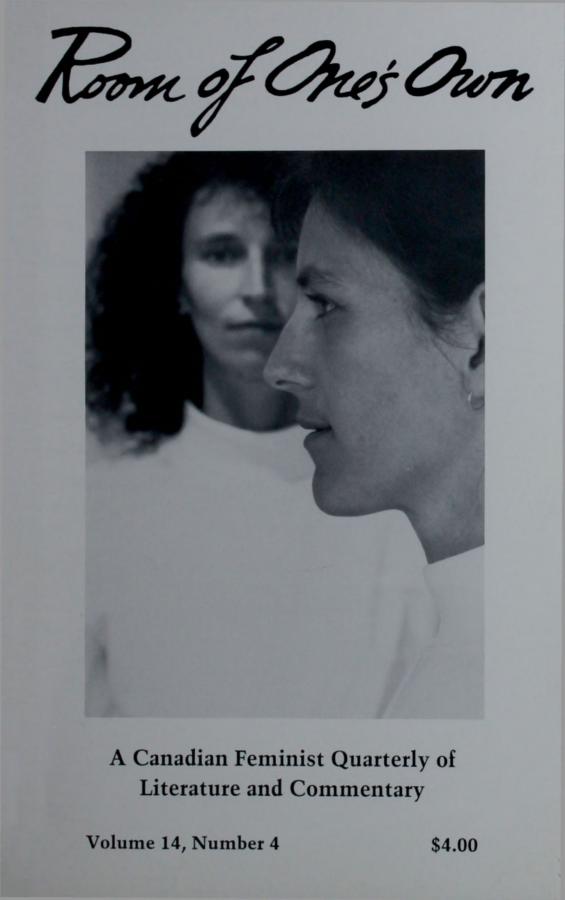ROOM 14.4 Women and Literary Theory
1991
Digital only; out of stock in print.
How women represent themselves and their concerns in writing, whether in the language of fiction, poetry, or criticism, is a fundamental issue to a feminist journal.
Recently, attention has been focused on literary criticism— how it oppresses or empowers women—variously characterizing women’s relationship to it as to a “dark shadow,” a distorting and malevolent being, and questioning whether theory is Beast, or Beauty. And questioning whether it is possible to not have a theoretical stance. In this issue of Room of One’s Own we look at some of the problems women confront when dealing with criticism—as readers and writers of it.
These essays are interesting for the variety of styles—autobiography, collaboration, review, critique—and approaches— quizzical, inviting, hostile—by which both writer and subject are represented. But their style always adds a dimension to their content. In the diallage between Charlene Diehl-Jones and Aritha van Herk you can see the playful form with its embedded narrative as an illustration of the interdependence of fiction and theory, and how it can open communication between women. Some of the other concerns that emerge call into question the possibility of di alogue—is it possible between parties who are not, in fundamental ways, “equal”? Might it be a form of patronization, colonization even, to “welcome in” a colleague on condition that she speak as one marginalized by colour, race, sexuality, or whatever? Margaret Christakos broaches this difficult problem in “Axioms to Grind” and Janice Kulyk Keefer responds. And what about the women- only nature of this forum—is there a danger here, as one might extrapolate from Kristjana Gunnars’ article, of stagnating, suffo cating even, by being too closed in a room with “one’s own” ? And are we all alike—what about the “essence” of woman? Is there a “feminine hieroglyphics” that only women can write, and fully understand, that underlies our writing, our being? Jennifer Hen derson and Kathleen Scherf attend to this. But if there is an essence common to women, and if we can be said to share—and pursue— common interests, does this merely perpetuate the power of white, middle-class, heterosexual women through a homogenization that silences those women marginalized within the global designation “women”? But if we differentiate amongst women do we risk los ing what empowerment we have gained through collective struggle? Do we risk—as Susan Rudy-Dorscht suggests—regressing to mute, embittered individuals in cataloguing minutely specified “hierarchies of oppression”?
And remember, these concerns shape the very essays you’re reading.
Obviously, we can’t deal with these problems adequately within the narrow confines of one issue of one journal—nor do we want to write that last word, on any of them. We as readers think about, try and understand, make choices, and respond in some way to what we are reading. The reading is, in many ways, only the first step in understanding and working through concerns that may evolve into long debates, and may yet never be resolved. Here a dialogue format attempts to show this sort of critical conside ration and response at work. Hopefully it can aid in focussing several ongoing debates about women’s writing in Canada.
So long as you ask, what is this you’re reading?
—Susan Macfarlane

$10.00
Additional information
| Delivery | Canada, USA, International, Digital |
|---|
In this issue: Margaret Christakos, Nancy Dautovich, Charlene Diehl-Jones, Julia Emberley, Barbara Godard, Kristjana Gunnars, Jennifer Henderson, Janice Kulyk Keefer, Susan MacFarlane, Susan Rudy Dorscht, Kathleen Scherf, Aritha Van Herk